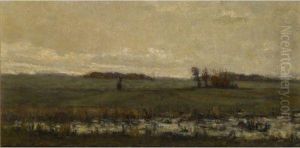Martinus Kramer Paintings
Martinus Kramer was a Dutch urban planner and architect, born in 1893 and passed away in 1978. His career spanned some of the most transformative periods in 20th-century architecture and urban development. Kramer is not widely known outside of his native Netherlands, but within his country, he made significant contributions to the planning and development of urban spaces during a time of great change and reconstruction, especially after the devastation of World War II.
Kramer's work is often characterized by a pragmatic approach to urban planning, reflecting the needs of a society that was rapidly modernizing while also dealing with the scars of war. He was part of a generation of architects and planners who were tasked with rebuilding cities and creating new housing and infrastructure to accommodate the growing population and the evolving modes of transportation.
Throughout his career, Kramer maintained a focus on the human scale in urban design, ensuring that the development of cities served their residents effectively. His designs frequently integrated green spaces and were thoughtful about the quality of life for inhabitants. He also worked on restoring historical buildings and areas, recognizing the importance of heritage in the context of modern urban environments.
Despite his contributions, Martinus Kramer has not been the subject of extensive international scholarship and his work has remained somewhat overshadowed by his more famous contemporaries. Nevertheless, in the Netherlands, he is appreciated for his role in shaping the urban landscape during a pivotal era in the country's history.

